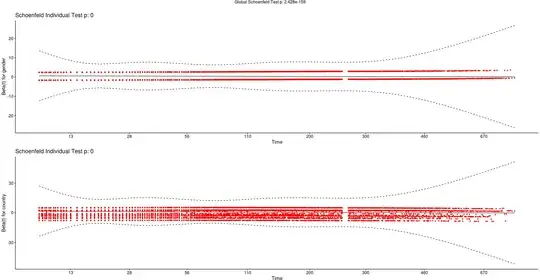Performed a drug survival analysis (Cox proportional hazard model) on patients with disease X, comparing male subjects with females while adding to the model country.
When checking the assumption of proportional hazard, I found that the test was statistically significant (therefore null hypothesis that it is proportional rejected). See the code I used + my output in R.
cox.model <- coxph(survObject ~ gender + country, data = dat)
cox.zph(cox.model)
ggcoxzph(cox.zph(cox.model))
chisq df p
gender 48.7 1 3e-12
country 745.6 14 <2e-16
GLOBAL 793.2 15 <2e-16
However when I look at the following plot:

I notice that the residuals start to deviate near the end but eyeballing not so much for country.
This makes me think - isn't the difference statistically significant, simply because I have a large dataset? Current analysis performed on 15k patients.
I remember checking average age for female = 45.3 and male = 45.6 and this difference too was statiscally signifcant.
I have two questions
- Would you consider the assumption of proportional hazard violated? Please explain.
- What would your next step be?